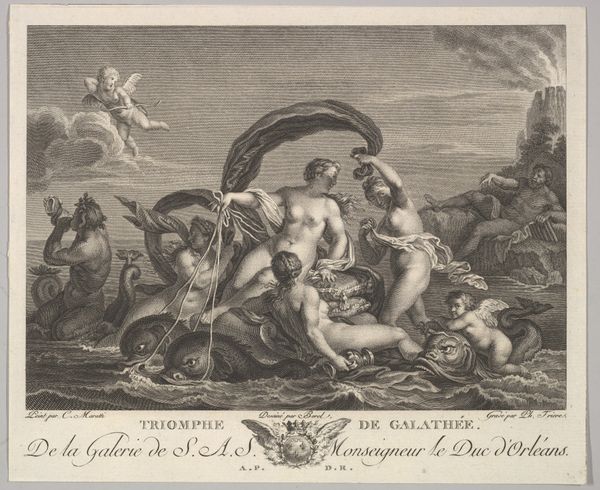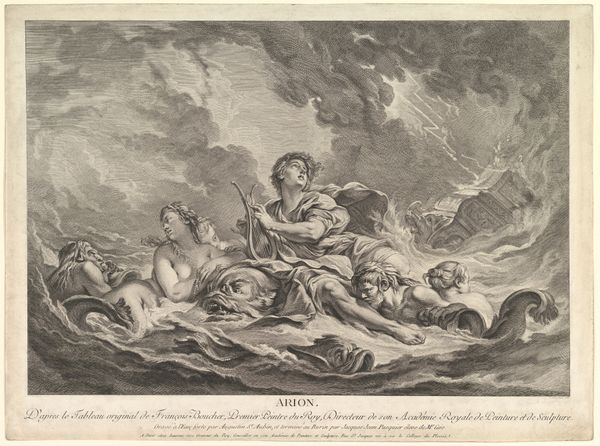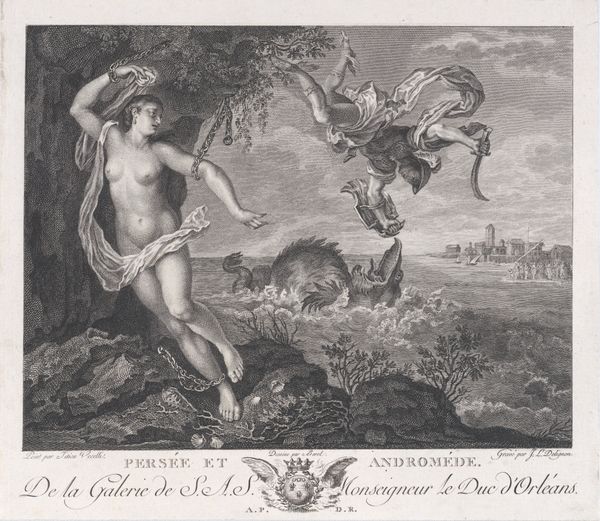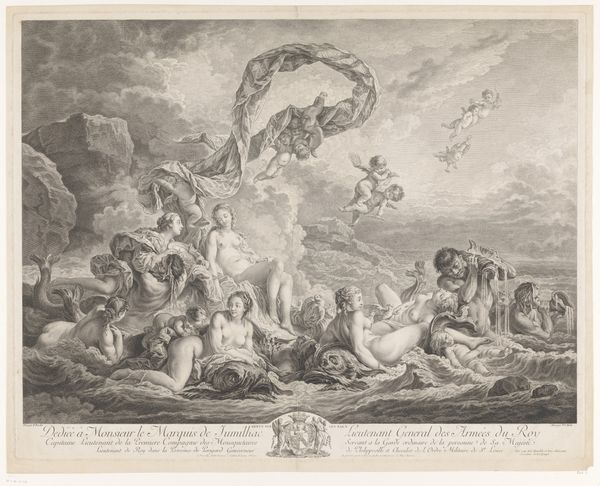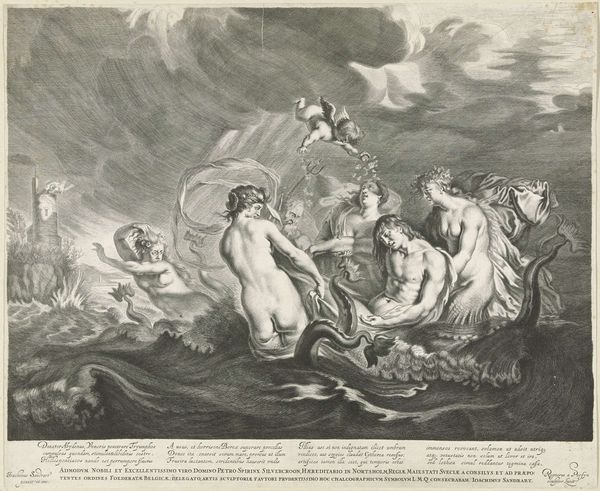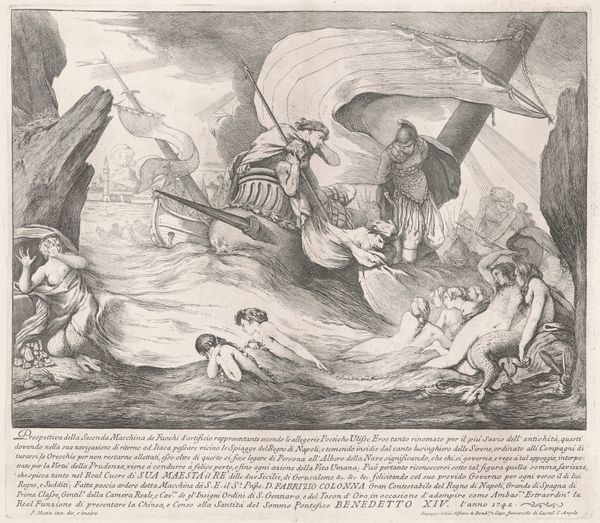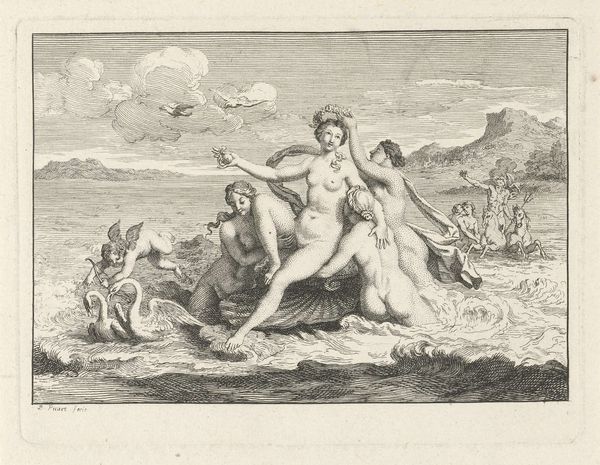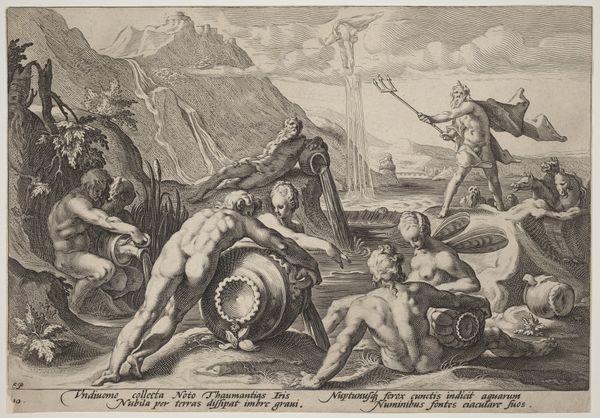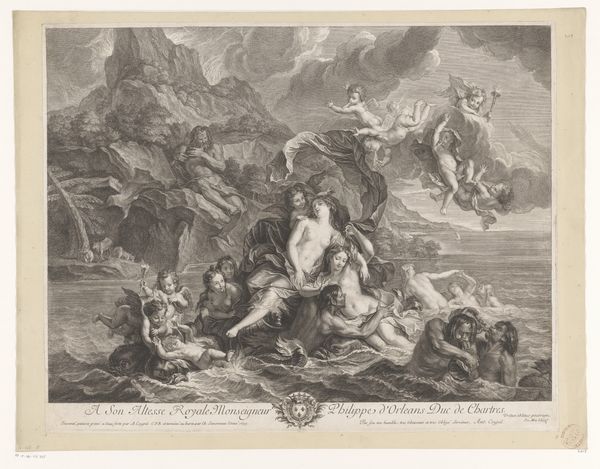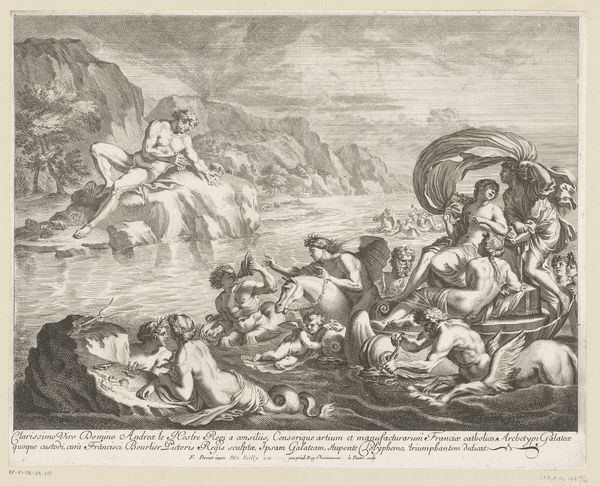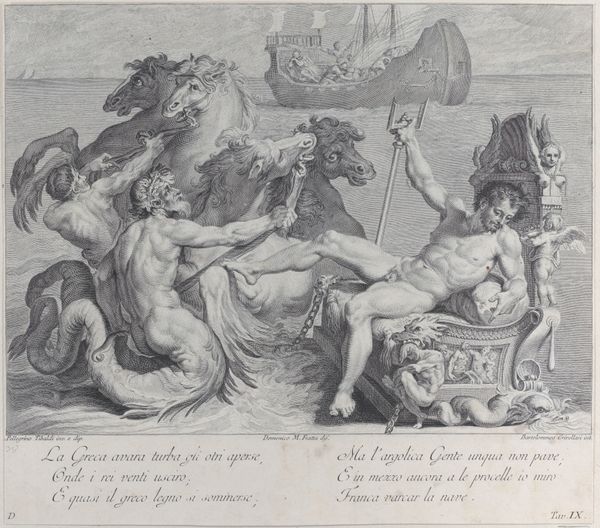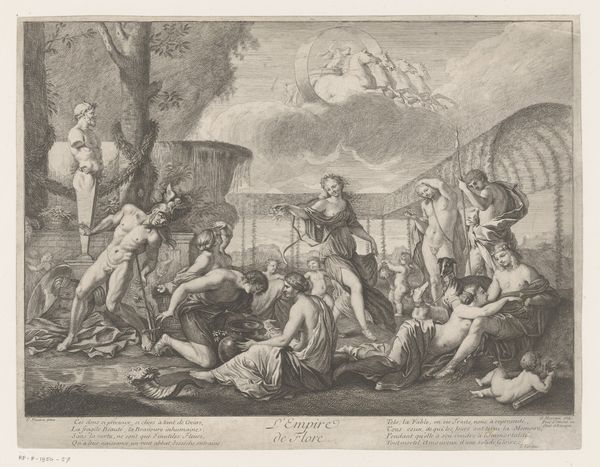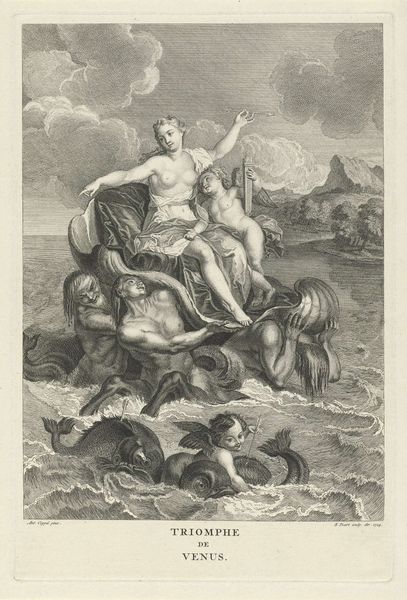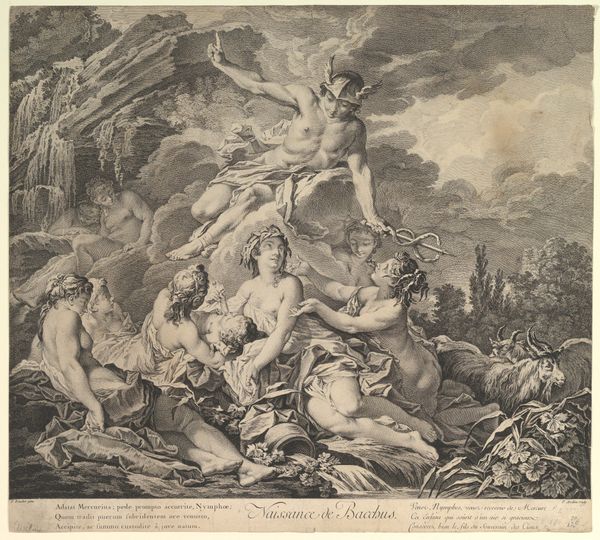
engraving
#
baroque
#
old engraving style
#
figuration
#
mythology
#
portrait drawing
#
history-painting
#
nude
#
engraving
Dimensions: height 255 mm, width 288 mm
Copyright: Rijks Museum: Open Domain
Curator: Looking at "The Triumph of Galatea," created between 1700 and 1757 by Antoine R. Trochon, I'm struck by its almost dreamlike quality. Editor: Dreamlike indeed. It feels ethereal, all flowing lines and a certain softness, despite being an engraving. The gray scale seems apt for that Baroque sensibility. It also looks to have used impressive and deft hatching for this medium. Curator: Absolutely. Engravings such as these were critical in disseminating artistic styles and mythological narratives. Here, Galatea's story became accessible beyond aristocratic circles thanks to pieces like this. How do you think the choice of engraving influences the artwork’s meaning, or at least its reception? Editor: The labor itself is intriguing. Think about the precise tooling needed to carve these delicate lines into a metal plate. This meticulous and exacting work brings an element of craft to what might otherwise be seen as 'high art'. You mentioned aristocracy; in a way, this bridges gaps—between material and ideal, class and culture. Curator: Good point. And that makes you wonder who this piece was commissioned by and intended for. We know the Rijksmuseum houses it now. Its journey adds to its layered narrative, as a physical object existing through political upheaval and social transformation. Editor: It prompts you to think about what these art objects are as cultural artifacts versus, say, the emotional storytelling you would get through paintings of that period, no? It serves a dual function in that respect, right? Curator: Exactly! It invites both appreciation of skill and deeper engagement with the visual culture of its era. A fascinating piece when we see the labor, socio-political influences, and dissemination capabilities all at work! Editor: Couldn't agree more. The engraving process amplifies the socio-historical context of "The Triumph of Galatea." It speaks volumes to me about the evolving relationship between artist, material, and audience!
Comments
No comments
Be the first to comment and join the conversation on the ultimate creative platform.
